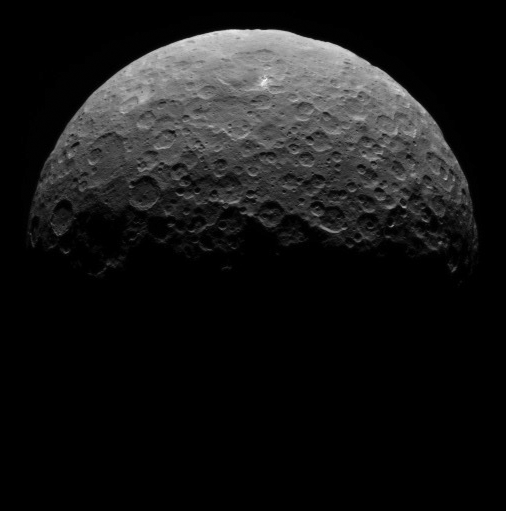Ceres' bright spots come back into view

The two brightest spots on dwarf planet Ceres, which have fascinated scientists for months, are back in view in the newest images from NASA's Dawn spacecraft. Dawn took these images on April 14 and 15 from a vantage point 14,000 miles (22,000 kilometers) above Ceres' north pole.
The images show the brightest spot and its companion clearly standing out against their darker surroundings, but their composition and sources are still un-known. Scientists also see other interesting features, including heavy cratering. As Dawn gets closer to Ceres, surface features will continue to emerge at in-creasingly better resolution.
Dawn has now finished delivering the images that have helped mission planners maneuver the spacecraft to its first science orbit and prepare for subsequent ob-servations. All of the approach operations have executed flawlessly and kept Dawn on course and on schedule. Beginning April 23, Dawn will spend about three weeks in a near-circular orbit around Ceres, taking observations from 8,400 miles (13,500 kilometers) above the surface. On May 9, Dawn will begin to make its way to lower orbits to improve the view and provide higher-resolution observa-tions.
"The approach imaging campaign has completed successfully by giving us a pre-liminary, tantalizing view of the world Dawn is about to start exploring in detail. It has allowed us to start asking some new and intriguing questions," said Marc Rayman, Dawn's mission director and chief engineer, based at NASA's Jet Pro-pulsion Laboratory, Pasadena, California.
On March 6, Dawn became the first spacecraft to orbit a dwarf planet, and the first to orbit two extraterrestrial targets. Scientists will be comparing Ceres to giant asteroid Vesta, which Dawn studied from 2011 to 2012, in order to gain insights about the formation of our solar system. Both Vesta and Ceres, located in the main asteroid belt between Mars and Jupiter, were on their way to becoming planets before their development was interrupted.
More information: For more information about Dawn, visit dawn.jpl.nasa.gov
Provided by Jet Propulsion Laboratory





















